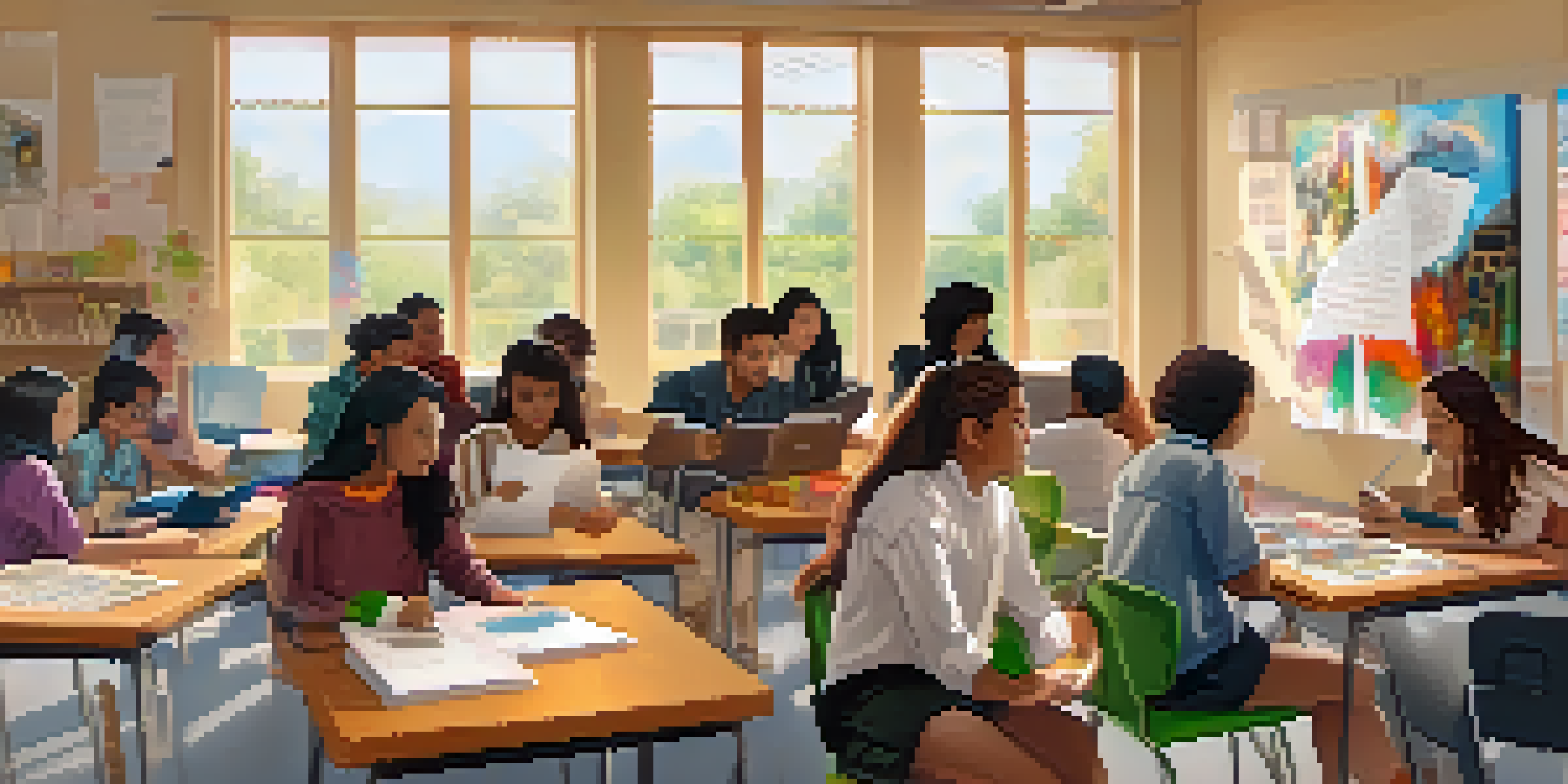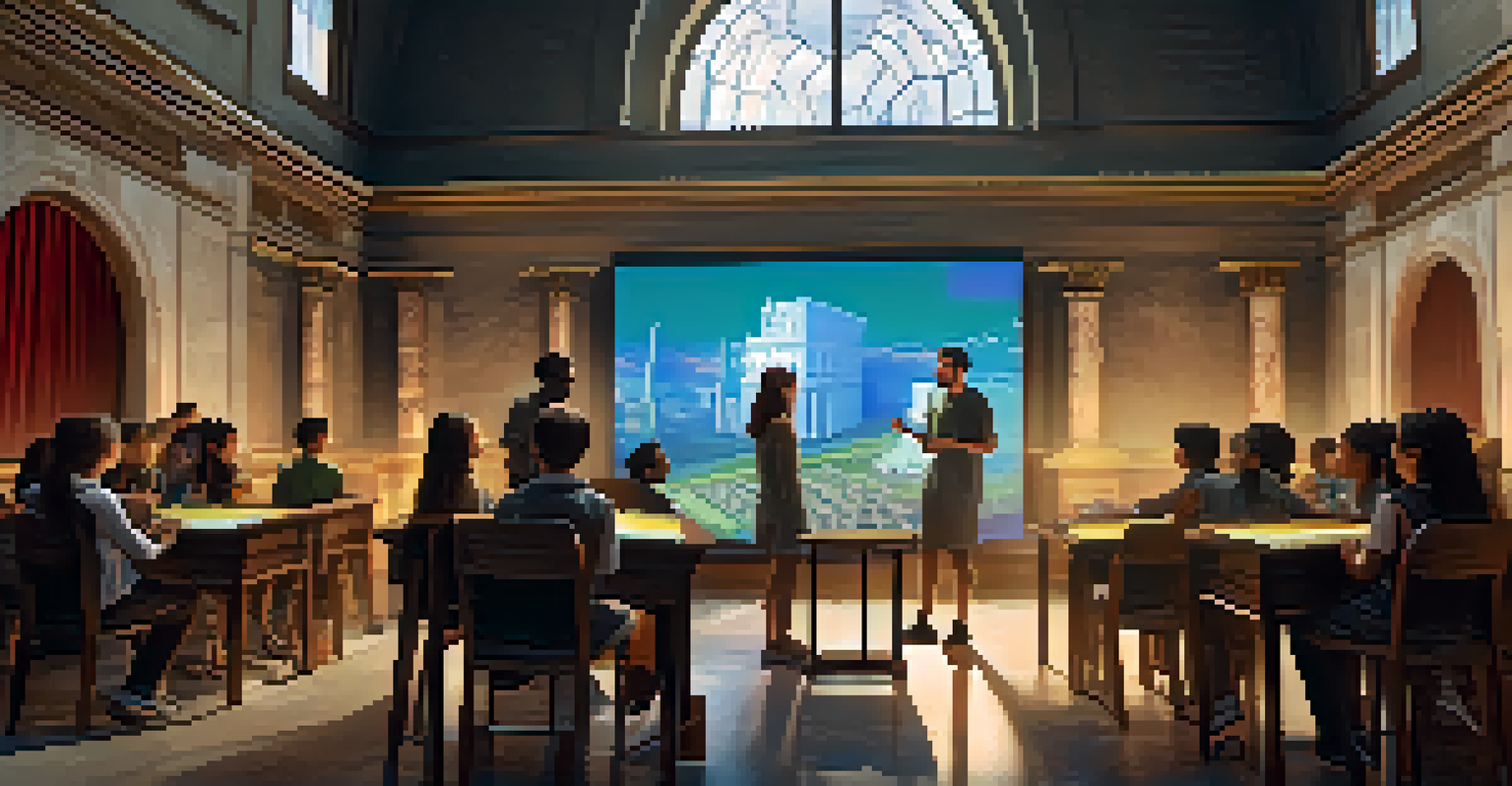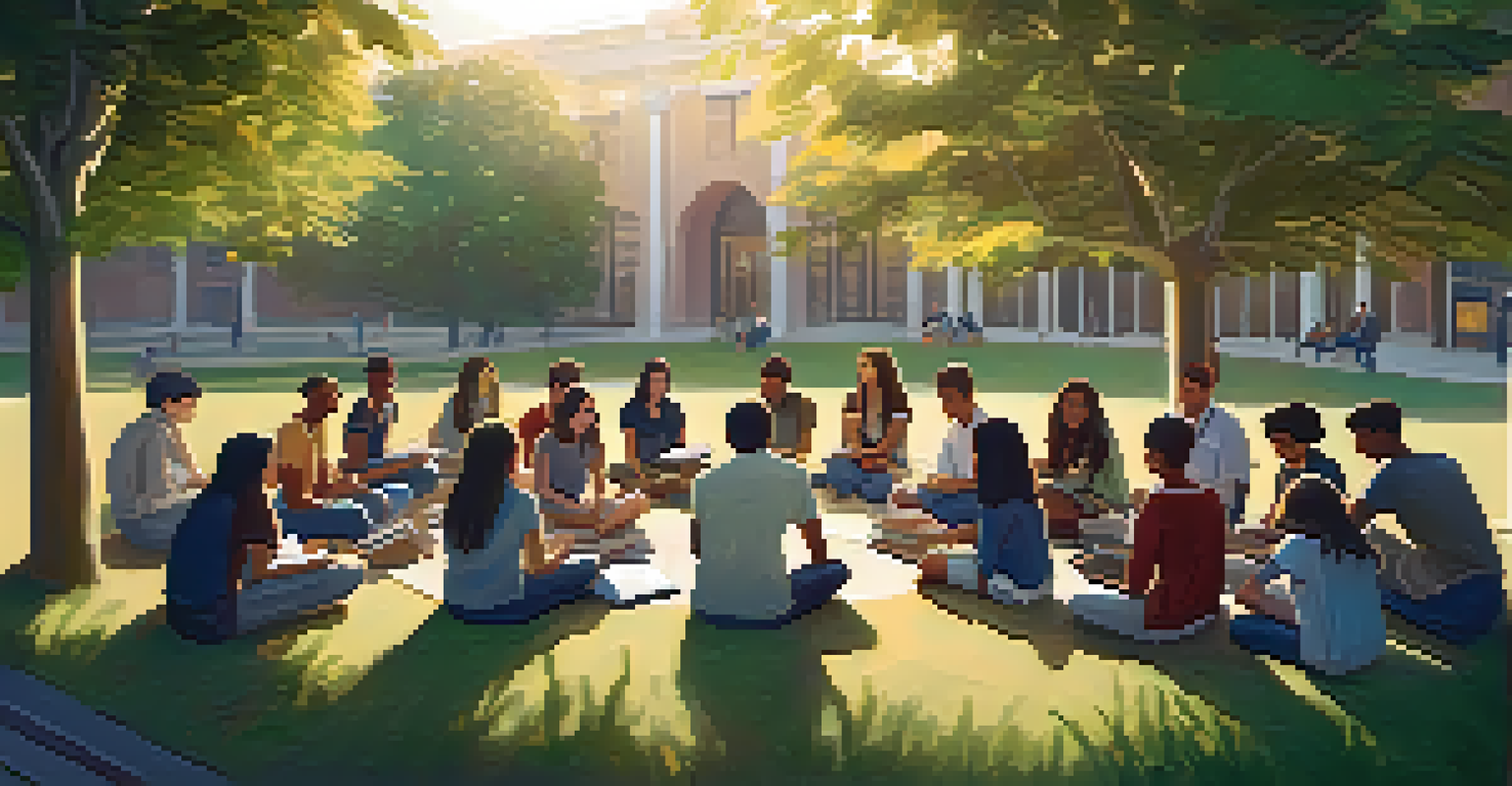Transmedia Learning and Cultural Perspectives in Education

Understanding Transmedia Learning in Education
Transmedia learning is an innovative approach that uses multiple media platforms to deliver educational content. It allows students to engage with material across various formats, such as videos, podcasts, and social media. This method not only caters to different learning styles but also creates a richer, more immersive educational experience.
Education is not the filling of a pail, but the lighting of a fire.
For example, a student learning about ancient civilizations might watch a documentary, read a graphic novel, and participate in an online forum. This variety not only reinforces the content but helps students make connections between different forms of media. As a result, learners become active participants in their education, rather than passive recipients of information.
As educators embrace transmedia learning, the focus shifts from traditional teaching methods to a more holistic approach. This encourages collaboration and creativity, preparing students for a world where digital literacy is essential. Ultimately, transmedia learning enhances understanding by weaving together diverse narratives and perspectives.
Cultural Perspectives: A Key Component of Learning
Cultural perspectives play a crucial role in shaping how students perceive and engage with educational content. By integrating various cultural viewpoints, educators can create a more inclusive learning environment that respects and values diversity. This not only enriches the curriculum but also fosters empathy and understanding among students.

For instance, when teaching literature from different cultures, educators can encourage discussions that explore themes, values, and traditions unique to each narrative. This approach not only enhances critical thinking but also helps students see the world through a broader lens. As a result, learners are better equipped to navigate an increasingly interconnected global society.
Transmedia Learning Enhances Engagement
Utilizing multiple media formats engages students and caters to diverse learning styles.
Incorporating cultural perspectives into transmedia learning aligns with the goal of fostering global citizenship. By exposing students to a variety of voices and experiences, educators can inspire them to think critically about global issues. This creates a generation of learners who are not only knowledgeable but also socially aware and culturally sensitive.
Benefits of Transmedia Learning in Diverse Classrooms
Transmedia learning offers numerous benefits, particularly in diverse classrooms where students come from various cultural backgrounds. It allows educators to tailor content to meet the needs of all learners, ensuring that everyone can engage with the material. By utilizing multiple media forms, teachers can create a more dynamic and inclusive environment.
The beautiful thing about learning is that no one can take it away from you.
For example, a classroom project on environmental issues could include video documentaries, interactive maps, and social media campaigns. This variety enables students to explore the topic from different angles, fostering collaboration and creativity. Additionally, it empowers students to share their unique cultural experiences related to the subject matter.
Ultimately, transmedia learning not only enhances academic performance but also builds a sense of community among students. As they collaborate on projects and share their perspectives, they learn to appreciate the richness of diversity. This prepares them to work effectively in diverse teams in their future careers.
Challenges in Implementing Transmedia Learning
While transmedia learning offers exciting opportunities, it also comes with its own set of challenges. One significant hurdle is the need for educators to be well-versed in various media platforms. Without proper training or resources, teachers may struggle to effectively integrate these tools into their curriculum.
Moreover, not all students may have equal access to technology, which can create disparities in learning experiences. Educators must find ways to ensure that all students can participate fully, regardless of their resources. This could involve providing access to school devices or offering alternative assignments that don't rely on technology.
Cultural Perspectives Foster Inclusion
Incorporating various cultural viewpoints enriches the curriculum and promotes empathy among students.
Additionally, the sheer volume of content available across different media can overwhelm both teachers and students. Finding the right balance between quality and quantity is essential for effective learning. Educators must curate resources thoughtfully to ensure that students remain focused and engaged.
The Role of Technology in Transmedia Learning
Technology serves as the backbone of transmedia learning, enabling the seamless integration of various media formats. From interactive apps to virtual reality experiences, technology provides endless possibilities for enhancing education. It allows educators to create engaging, immersive learning environments that resonate with students.
For instance, using augmented reality in a history lesson can transport students to ancient Rome, bringing the past to life in a way textbooks cannot. This type of engagement not only captivates students' attention but also deepens their understanding of complex concepts. Technology thus becomes a powerful tool for facilitating transmedia learning.
However, it's important to remember that technology should complement, not replace, traditional teaching methods. A balanced approach that leverages both technology and face-to-face interaction can lead to the best educational outcomes. By blending these elements, educators can create a richer, more engaging learning experience.
Case Studies: Successful Transmedia Learning Initiatives
Several educational institutions have successfully implemented transmedia learning initiatives, showcasing its potential. One notable example is a project where students created a multimedia presentation on climate change. By combining video interviews, infographics, and social media campaigns, students learned valuable skills while engaging deeply with the subject matter.
Another inspiring case involved a literature class that explored global narratives through various media formats. Students analyzed a novel, watched film adaptations, and created podcasts discussing the themes and characters. This multi-faceted approach not only enriched their understanding but also encouraged collaboration and creativity.
Technology is Crucial for Learning
Technology supports the integration of different media, creating immersive educational experiences.
These case studies highlight the effectiveness of transmedia learning in fostering engagement and critical thinking. By embracing diverse media and cultural perspectives, educators can inspire students to become active participants in their learning. These initiatives serve as powerful reminders of the potential for innovation in the classroom.
Future Directions for Transmedia Learning in Education
As we look to the future, transmedia learning is poised to play an increasingly significant role in education. With advancements in technology and a growing emphasis on inclusivity, educators have the opportunity to create even more immersive and engaging learning experiences. This will allow students to connect with diverse perspectives and narratives.
Moreover, as educational institutions adapt to the changing landscape, there will be a greater focus on interdisciplinary approaches. Combining subjects like science, art, and technology through transmedia learning can lead to innovative projects that resonate with students. This not only enhances understanding but also fosters a love for learning.

Ultimately, the future of transmedia learning lies in its ability to create meaningful connections between content and students' lives. By prioritizing cultural perspectives and leveraging technology, educators can cultivate a generation of learners who are not only knowledgeable but also compassionate and globally aware. The possibilities are truly endless.